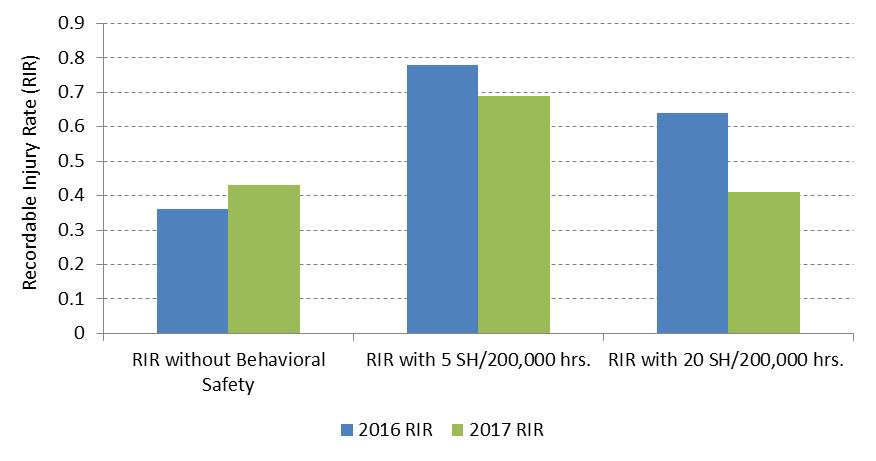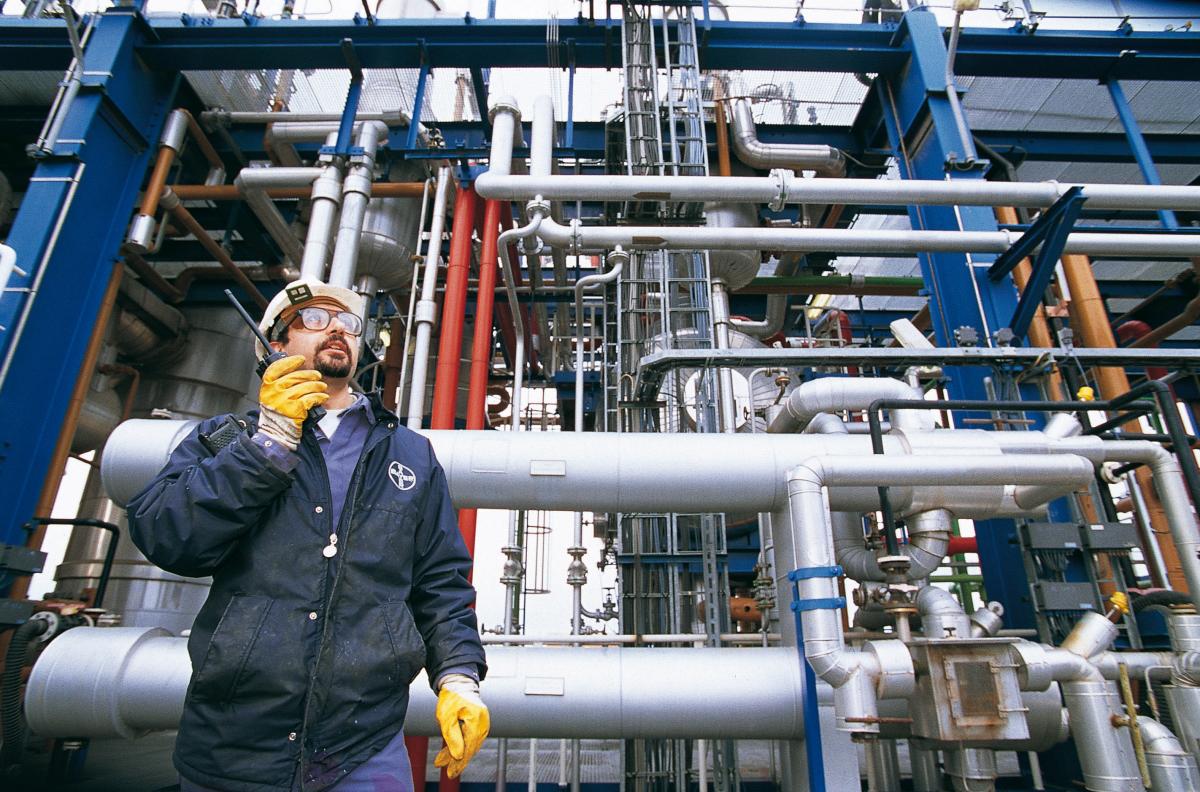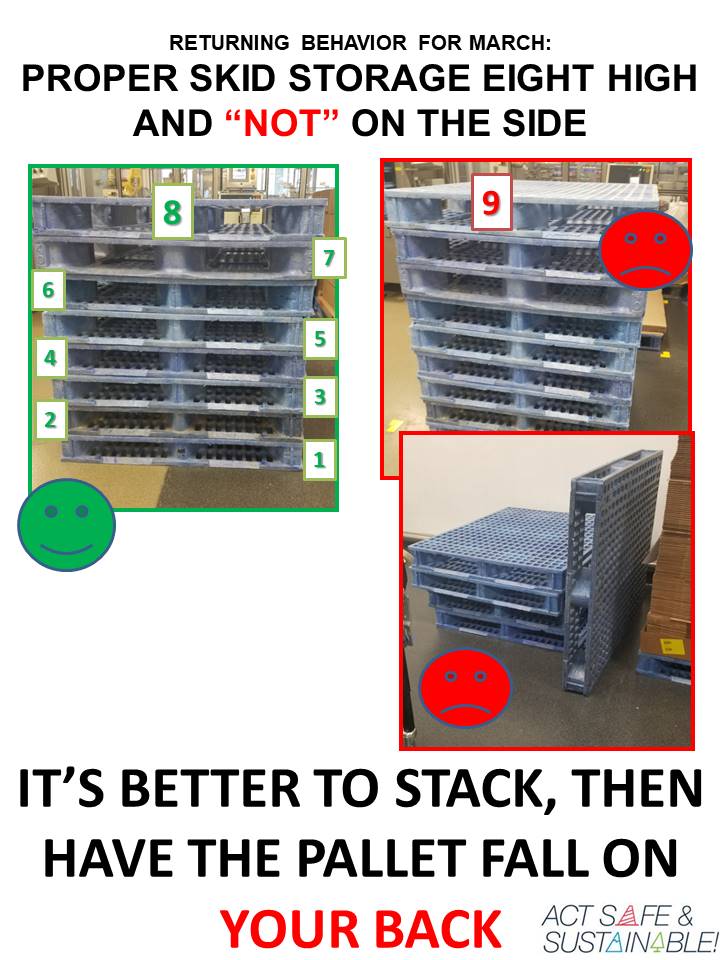Bayer: Building Safe Habits Across the Globe
Bayer aspires to be a valued leader in health, safety and environmental protection (HSE) with zero work related injuries or illnesses. Occupational Safety & Health Risks are actively managed and risk reduction measures are put in place. Given the good performance already reached, Bayer realized that the technical and organizational measures alone were now insufficient to further improve their health and safety performance. This requires a mature health and safety culture, or in short a prevention culture, in which everything they say and do that increases or decreases health and safety risks is important. With a firm commitment to safety in mind, Bayer sought to further enhance and solidify its safety cultures, both at the organizational and local level. After a broad search, they chose Aubrey Daniels International (ADI) to help them do so. “Although their safety performance was already at a high level, Bayer wanted to continue to improve its safety culture through a consistent and global behavioral safety process,” said Tom Spencer, ADI president & CEO.
A Global Roll-Out
While the goal was a global roll-out, the implementation needed to consider the current safety performance, safety culture, business focus, and employee structure at each site (or business region in the case of remote workers such as service representatives). The process began with a series of planning meetings between Bayer’s global project Working Group, Spencer, and Ken Wagner, lead project consultant. ADI then implemented safety culture surveys in more than 20 countries in North and South America, Europe, and Asia and partnered with Bayer's regional safety leaders to conduct safety culture site assessments in those same regions. “With the experts from ADI, we defined the types of behaviors we would expect to see if the safety culture was early, developing, or mature in terms of leadership engagement, employee involvement, and the quality of the safety systems in place. These assessments define the (behavioral) improvements that will have an immediate positive impact on the safety performance and the site-specific, follow-up (e.g. the behavioral safety trainings). The assessment results also provide a baseline to measure future developments against,” said Bayer’s Kees Hommes, occupational safety and industrial hygiene manager and overall project manager and implementation champion for Bayer.
 Given the size and geographic scope of their organization, Bayer wanted an implementation model that would build their internal expertise in behavioral safety to ensure localized implementation and long-term sustainability. To help accomplish that, ADI facilitated BBS and Safety Leadership trainer certification workshops for approximately 115 internal Bayer safety and operations personnel. Through the trainer certification process and subsequent management and employee training and coaching by Bayer’s internal staff, Bayer has been implementing a frontline safety observation and peer feedback process (BBS) supported by a positive accountability system to ensure management direction and active support for the process (Safety Leadership). ADI’s Safety Leadership process focuses all levels of management on providing frequent safety touchpoints (coaching conversations) and sharing good examples of those touchpoints in weekly debrief sessions. From management to frontline employees—manufacturing workers, lab technicians, and lone workers including salespersons, drivers, and farmers—Bayer’s certified trainers began the journey of bringing consistent behavioral safety processes to all levels of personnel across the globe.
Given the size and geographic scope of their organization, Bayer wanted an implementation model that would build their internal expertise in behavioral safety to ensure localized implementation and long-term sustainability. To help accomplish that, ADI facilitated BBS and Safety Leadership trainer certification workshops for approximately 115 internal Bayer safety and operations personnel. Through the trainer certification process and subsequent management and employee training and coaching by Bayer’s internal staff, Bayer has been implementing a frontline safety observation and peer feedback process (BBS) supported by a positive accountability system to ensure management direction and active support for the process (Safety Leadership). ADI’s Safety Leadership process focuses all levels of management on providing frequent safety touchpoints (coaching conversations) and sharing good examples of those touchpoints in weekly debrief sessions. From management to frontline employees—manufacturing workers, lab technicians, and lone workers including salespersons, drivers, and farmers—Bayer’s certified trainers began the journey of bringing consistent behavioral safety processes to all levels of personnel across the globe.
Consistent with ADI’s BBS process, Bayer set a goal of training approximately 25% of employees as the initial core team members responsible for conducting peer safety observations and feedback, summarizing and sharing observation data, planning celebrations, etc. We actually trained already close to 40% of the employees at the participating sites. “Other employees can become involved in these core team activities over time,” Hommes explained. “As more core teams form, and as employees rotate in and out of those teams, we are hoping to eventually train close to 100 percent of our employees.”
When a work group reaches approximately a month of performing a safe behavior at 100 percent, that behavior is said to have reached habit strength. Hommes reports that over 3000 (!) safe behaviors have reached habit strength across the organization thus far! “If we look at the sites that developed these “safe habits,” we see that the incident rates are going down,” he said. “After 2 ½ years of program roll-out, the number of recordable injuries are reducing at sites that implemented behavioral safety.”

Unfortunately the number of injuries increased last year at the sites that did not yet implement behavioral safety. The measure used for this, the RIR, increased 19% in 2017.
For sites that started implementation and recorded 5 safe habits, the negative trend has already flattened to almost zero. When the number of safe habits further increased to 5 or even 20 safe habits per 200.000 hours, the RIR has been reduced to 11% and 35%, respectively. Thus behavioral safety may reduce the number of injuries 30 to 50%. It is too early to talk about a trend but this is a promising figure and a positive indication of what the program can bring when we continue the global roll-out as planned!"
Hommes notices some differences in the cultural perspectives regarding the use of behavioral science, but he offers advice that is cross-cultural: “Take your time for setting up proper project management for an implementation of this size, have your business case for doing so, and make sure to have senior/executive management support.” This support is critical both at the corporate level and at the individual site level.
The following are insights shared from safety leaders in Europe, Asia, South America, and North America.
A Closer Look at Europe
According to Martin Rueddel, head of occupational health DOR, in 2016, 90 percent of work-related accidents at the Dormagen manufacturing site in Germany were caused or influenced by unsafe behaviors. In 2017, that percentage was reduced to 40 percent. Dormagen is the world’s largest production site for the active ingredients of products for Bayer’s Crop Science Division, meaning employees there work with hazardous substances such as the active ingredients in fungicides, insecticides, and herbicides combined with the everyday safety concerns such as lifts, slips, and falls.
Rueddel stressed the value of culture and site customization for making behavioral safety successful, beginning with the initial training. “When training, examples of practices, actual accidents, and pictures from the area or branch help enable people to train in an experienced, authentic way,” he advised.
In Germany, he acknowledges that several BBS terms such as “observations” and “consequences” carried some negative connotations until they were paired with positive interactions. “People had to learn this and that is a challenge,” he said. “But my impression is that it’s really a good thing to be more positive, to recognize good work. It’s the only way to improve.” He finds that having group discussions regarding safety issues is a good way to get people involved and after overcoming a bit of employee resistance regarding observations he concluded, “The observation is a very simple element. It’s just a trigger, a simple, very small trigger to get people thinking about receiving positive reinforcement.”
A Closer Look at Asia
Jishen Ma, site HSE manager, has hands-on involvement in the training, support, and roll-out of BBS in China. “The behavioral safety program champion, Grace Chen, is my team member,” Ma said. “I support her to implement the program and encourage other department managers to support the program.” Leadership involvement is making a difference. Managers interact more with personnel and meet regularly to share information and progress regarding BBS. As Ma explained, “Supervisors and managers provide positive reinforcement in weekly BBS core team and Safety Leadership debrief meetings.” Safe behaviors are being developed at the China facilities, and Ma believes an overall safety mindset will come with more time. “There are more discussions now about safe behavior. More colleagues, besides just the core team members, are involved in the selection of behaviors to be brought to habit strength,” he said. Although, he observes that there always could be more peer-to-peer feedback, the process is running well. Ma doesn’t believe that cultural differences are critical to BBS as long as the process is followed correctly. “It is important to share the data daily and to have celebrations. It is also important that supervisors and managers have regular debrief meetings,” Ma stated.
He added that selecting suitable behaviors for improvement can become a challenge as time passes. The tendency may be to select behaviors that can be observed more frequently, but many high-risk behaviors don’t occur regularly. “Now we are trying to optimize the behavior selection process and make some behavior categories for team members to observe based on those categories,” he said.
A Closer Look at Latin America
Armando-Norberto Hornus, head of HSE Latin America, points out that many other good safety initiatives were already in place at Latin America’s facilities, which produce and pack chemicals, pharmaceuticals, and medical products, but BBS introduced behavioral practices that have spread to areas beyond safety. “When people receive positive feedback, they feel good and are encouraged to do more of the same. When people get used to positive feedback, they will also give positive feedback on other topics, not just safety. This means we achieve a better working environment in all areas,” he commented.
The sales force in Argentina, which has limited opportunity for peer observation, decided to self-monitor and collect data on their own driving behaviors. Within one month, they had achieved 100 percent compliance for never passing other vehicles on a yellow line. This one behavior soon led to other driving behaviors such as following the speed limit, maintaining a safe distance from other vehicles, and the proper use of mirrors. Soon the group members reported they were taking these safe behaviors home and encouraging family members to adopt safer driving habits. “If people go for 28 days at 100 percent of performing a safe behavior, it becomes a habit. People then incorporate this automatically,” said Hornus. “For instance, now if I don’t put on a seatbelt, I’m uncomfortable. I don’t feel safe, because wearing a seatbelt is a habit.”
This is one of many examples shared by Hornus, who has worked diligently together with Héctor-David Torres, Occupational Safety Manager Latin America, to take behavior-based safety to all of Bayer’s plants in Latin America. With some sites they found that the communications between all levels needed improvement. “We started with an action plan to make this connection more fluid. When they have a proper flow of information, once they start the actual program, everyone—the management and the employees—are all involved in the initiative,” Hornus explained. “When the whole group reaches 100 percent of a safe behavior and it converts to a safe habit, we have a celebration,” he stated. Latin America is having many celebrations. Hornus attributes these successes to the systematic feedback and reinforcement of BBS. He also publishes and distributes a monthly report featuring photos of team celebrations to encourage others to achieve behavioral goals to celebrate.
One lesson that Hornus passes on to managers is to reward honesty even when the data or the behavior being reported isn’t always what you want to see. “Why, if someone really wants to change their behavior would they not be honest to themselves if they are trying to improve?” he asked. Time and time again, this insight has proven true as employees are honest even when their numbers are low, because they want to improve their own safety.
With turnover, new hires, and contract workers always remaining a factor in any large business, Hornus points out the difficulties of having everyone at all times trained and practicing behavior-based safety. Yet, he believes the time and effort involved are worth it. “The concepts of BBS seem so simple that sometimes people will say that nothing will happen with this,” he stated. “But when they start practicing and living these concepts, they realize. By 2020, we should have covered the whole population of the company here in Latin America—some 13,000 employees. I’m very confident that we will have great results.”
A Closer Look at North America
After training over 700 people in the BBS process in five major manufacturing sites, and one commercial sales and service organization last year alone, Mark Aprile, director of U.S. occupational health and safety, gives a thumbs-up to the overall acceptance of the process. “From leadership to frontline employees, people really embraced this concept, because, in my view, it just makes sense,” he said. “Once people go through the training and really understand how the process works, it’s easy to support.”
One site worked on the behavior of properly stacking pallets. Doing so eliminates not only ergonomic hazards in lifting, but also addresses the slips, trips, and falls associated with improperly stored pallets. The teams pinpointed the behaviors and took photos of the correct result of following these behaviors. “I was walking around the facility and it was impossible for me to find pallets that weren’t stacked according to the behaviors they had targeted,” said Aprile. “It showed me how with engagement and buy-in, the employees can really improve their own personal safety and that of their teammates.”
One service organization focused on driving without using their phones. “One thing I thought was great about working on that was it also influenced the behavior of the managers, who were less tempted to call or text employees when they knew the employees were driving,” Aprile commented.
Regarding Safety Leadership, Aprile observes that regular debriefs between managers on the status of BBS are most successful when incorporated into regular meetings and that touchpoints (short coaching conversations) are most effective at sites where employees are fully engaged in the observation process. “When the leaders are well aware of the behaviors that teams are trying to develop into habits, it creates a built-in touchpoint for those leaders,” he said. “The key to success is employee engagement and involvement and visible, strong leadership support for developing a safety culture.”
In any organization, but especially one the size of Bayer, Aprile advises developing a customized plan before starting BBS implementation. “You have to take the concepts and fit them into what your organization is already doing,” he said. “What’s different about ADI is that ADI teaches you the concepts and gives you the freedom to make the process your own.” Even though Bayer’s safety record is good, Aprile explained that constant improvement is always a goal and that safety is a continuous journey. “BBS is a critical tool in getting to that next level of performance,” he added. “I also think that within our community of HSE professionals—we’ve got people all over the world—it has helped to provide a common language.”
Success Stems From Site-Level Engagement
The size and diversity of Bayer’s businesses and sites presented implementation challenges much beyond those faced by smaller companies. Yet regardless of the scale of the implementation, active management and employee engagement in the Safety Leadership and BBS processes at the site level are primary predictors of success. Both processes increase the amount and frequency of positive reinforcement for safety-related behaviors and create a positive work culture where safe habits can thrive.
“Bayer’s journey and its success so far is a direct result of the commitment of its leaders and the dedication of the trainers and core team members at the site level who are working tirelessly to build the behavioral tools into their work,” states ADI’s Ken Wagner. “Companies who implement a behavioral model, regardless of size, will quickly come to understand the power of building a culture of safe habits.”


